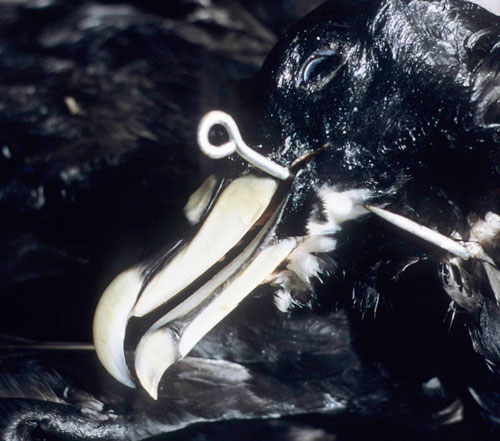A longline fishery for Patagonian Toothfish Dissostichus eleginoides takes place within the Economic Exclusive Zones of the French Île Crozet and Îles Kerguelen in the southern Indian Ocean. The total 2009/10 landings for this fishery were 5800 tonnes, representing the full TAC allocation.
The Reunion Freezer Longliner Shipowners Association (Syndicat des Armements Réunionnais de Palangriers Congélateurs; SARPC) has entered the assessment process for certification by the Marine Stewardship Council (click here). SARPC represents six fishing companies that are licensed to fish within the French EEZs of the Kerguelen plateau and around the Crozets. These fishing companies operate seven longline vessels from the French Island of Réunion.
As a longline fishery in the Southern Ocean, procellariiform seabirds, including albatrosses and petrels listed within ACAP, are at risk from the SARPC fishery, with White-chinned Procellaria aequinoctialis and Grey P. cinerea Petrels being noticeably affected. Click here for an earlier ACAP news item that lists recent scientific papers that describe seabird mortality and mitigation measures in place for the SARPC fishery.
The certification body is MacAlister Elliott & Partners Ltd. The SARPC toothfish fishery has now entered the information gathering phase of the assessment with meetings with representatives of the fishery, fishery managers and other stakeholders taken place in early February 2010 in Paris, France. Assessment is expected to be complete by October this year.

Another southern fishery currently seeking MSC certification is that for Tristan Rock Lobster Jasus tristani in the territorial waters of the United Kingdom's Overseas Territory of Tristan da Cunha in the South Atlantic (click here). Unlike longline fisheries, however, this fishery, which uses traps and hoop nets, is not considered to have adverse effects on ACAP-listed species such as the Tristan Albatross Diomedea dabbenena and the Spectacled Petrel P. conspicillata, both endemic to the Tristan Group (Ryan et al. 1991). The stakeholder meeting for this fishery was held in Cape Town, South Africa on 6 April 2010 when the risks to Tristan seabirds and their island habitats were discussed.
With thanks to Jo Gascoigne, MacAlister Elliott & Partners Ltd.
John Cooper, ACAP Information Officer, 07 April 2010

 English
English  Français
Français  Español
Español